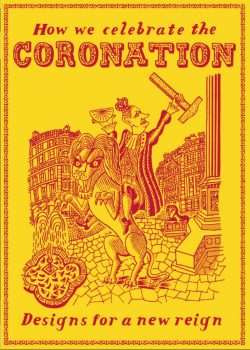The Public? Remember them?
 by Austin Williams
by Austin Williams
This short essay was included in the invited compilation edition, “How We Celebrate the Coronation: Designs for a New Reign” ed, Stephen Bayley & Robert Bargery. The Royal Fine Art Commission Trust, May 2023.
On 16th May 1968, the collapse of a residential tower block in Newham, east London was the moment when the UK’s house-building programme began its terminal decline from an historic peak of 450,000 homes per year. By 2022, just 182,000 new homes were built. The structural collapse of Ronan Point began the numerical collapse of the housing market. Shoddy workmanship was identified as the practical cause, but architectural arrogance was seen as the spark.
 It took a while for architects to rebuild their reputation, but no sooner had they started than we were told that buildings were responsible for 42% of carbon emissions. Architects were not only killing people but destroying the planet. What a depressing turnaround, for a creative profession to see itself as destructive. But as a consequence, a self-flagellating generation has grown up to counsel the next unsuspecting generation of architects, post-Grenfell, to recite the dogma that your impact on the world is potentially catastrophic.
It took a while for architects to rebuild their reputation, but no sooner had they started than we were told that buildings were responsible for 42% of carbon emissions. Architects were not only killing people but destroying the planet. What a depressing turnaround, for a creative profession to see itself as destructive. But as a consequence, a self-flagellating generation has grown up to counsel the next unsuspecting generation of architects, post-Grenfell, to recite the dogma that your impact on the world is potentially catastrophic.
Architects recanted their history and promised to be less hubristic. First denouncing architecture as potentially harmful; then purging thoughts of artistic autonomy and critical discretion. It has been a slow, purposeful journey almost entirely in the wrong direction.
Architects now explicitly accept, without question, that their actions have the potential to destroy biodiversity, pollute ecosystems and encourage unsustainable lifestyles. Anyone that doesn’t buy into that consensus is often thought to be part of the problem. The solution is to insist that architecture can only be safely delivered through technical means; through procedural, regulatory, and policy reform, removed from the grubby uncertainty, as others see it, of democratic and public accountability.
As a result, many architects have lost all contact with the very people – the public – that they fantasise about representing. There is seldom discussion about architecture qua architecture these days. Calling on the public is merely an instrumental means to justify a lifestyle-restrictive or carbon-neutral end.
Indeed, it is ironic that we are celebrating the Coronation of the Monarch given that, as royalty goes out of its way to encourage less deference, architects seem to want to transform themselves into a new elite. Even though they think of themselves as progressive, they actually look down their noses at those who “don’t get it.” And all in the name of social justice.
The very thing that we could and should do to help reinvigorate the towns and cities is to engage the public in an honest and open debate about alternative visions for the future. We need a free and open conversation. Architects should encourage people’s imaginations rather than limiting their choices.
VIEW THE FULL SERIES OF ESSAYS HERE:
“How We Celebrate the Coronation: Designs for a New Rein.”
__________________________________________
.






